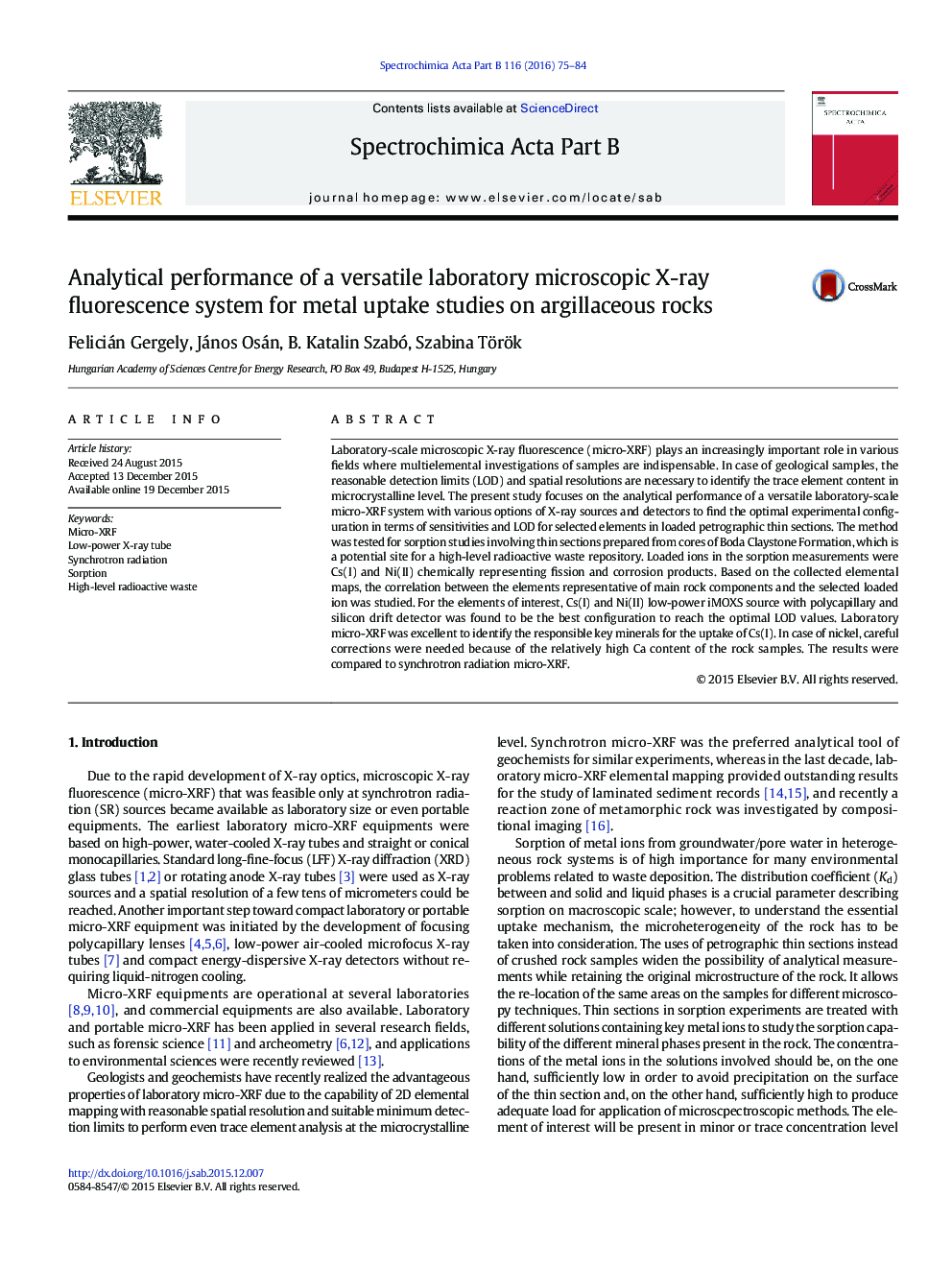| کد مقاله | کد نشریه | سال انتشار | مقاله انگلیسی | نسخه تمام متن |
|---|---|---|---|---|
| 1239528 | 1495687 | 2016 | 10 صفحه PDF | دانلود رایگان |
• Various laboratory micro-XRF configurations were tested in terms of limits of detection and spatial resolution.
• Metal uptake in geological thin sections was studied by 2D micro-XRF elemental mapping.
• Correlation between the main rock components and the elements of interest was investigated.
• Based on laboratory-scale measurements, the clayey matrix was responsible for Cs(I) and Ni(II) uptake.
Laboratory-scale microscopic X-ray fluorescence (micro-XRF) plays an increasingly important role in various fields where multielemental investigations of samples are indispensable. In case of geological samples, the reasonable detection limits (LOD) and spatial resolutions are necessary to identify the trace element content in microcrystalline level. The present study focuses on the analytical performance of a versatile laboratory-scale micro-XRF system with various options of X-ray sources and detectors to find the optimal experimental configuration in terms of sensitivities and LOD for selected elements in loaded petrographic thin sections. The method was tested for sorption studies involving thin sections prepared from cores of Boda Claystone Formation, which is a potential site for a high-level radioactive waste repository. Loaded ions in the sorption measurements were Cs(I) and Ni(II) chemically representing fission and corrosion products. Based on the collected elemental maps, the correlation between the elements representative of main rock components and the selected loaded ion was studied. For the elements of interest, Cs(I) and Ni(II) low-power iMOXS source with polycapillary and silicon drift detector was found to be the best configuration to reach the optimal LOD values. Laboratory micro-XRF was excellent to identify the responsible key minerals for the uptake of Cs(I). In case of nickel, careful corrections were needed because of the relatively high Ca content of the rock samples. The results were compared to synchrotron radiation micro-XRF.
Journal: Spectrochimica Acta Part B: Atomic Spectroscopy - Volume 116, 1 February 2016, Pages 75–84
